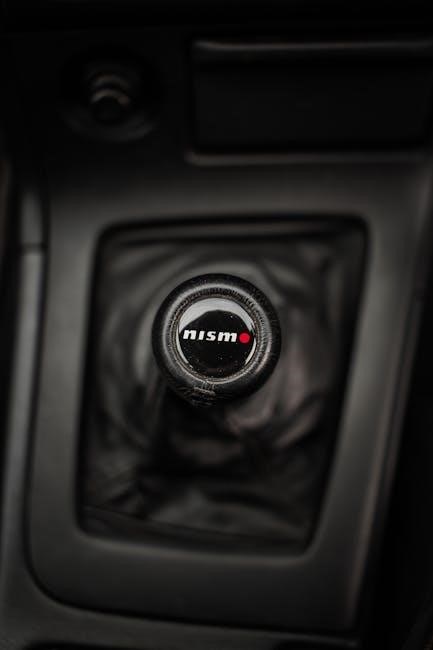Manual transmission gearboxes, while durable, can develop issues like oil leakage, clutch failure, and overheating, which hinder smooth operation and driving experience. Identifying these problems early is crucial for preventing costly repairs and ensuring optimal performance.
1.1 Overview of Common Issues
Manual transmission gearboxes often face issues like oil leakage, clutch failure, and overheating. These problems can lead to grinding noises, hard shifting, or gears slipping out of place. Additionally, worn synchronizers and low or dirty transmission fluid can cause poor gear engagement. Regular maintenance is essential to prevent these issues from escalating into major repairs.
1.2 Importance of Early Detection and Repair
Early detection of manual transmission issues is vital to prevent minor problems from becoming major repairs. Ignoring symptoms like unusual noises or difficulty shifting can lead to costly damage. Timely intervention ensures smoother operation, extends gearbox lifespan, and avoids unexpected breakdowns, keeping your vehicle reliable and safe on the road.
Oil Leakage from the Manual Transmission
Oil leakage is a common issue in manual transmissions, often caused by worn seals or gaskets. It can lead to lubrication loss, damaging internal components and requiring costly repairs if not addressed promptly.
2.1 Common Causes of Oil Leakage
Oil leakage in manual transmissions often stems from worn or damaged seals, gaskets, or drain plugs. High mileage and improper installation can exacerbate these issues, leading to fluid loss. If left unaddressed, leakage can result in internal component damage and costly repairs, making early detection critical for maintaining gearbox integrity and performance.
2.2 Signs and Symptoms of a Leak
Signs of a manual transmission oil leak include visible oil spots under the vehicle, low fluid levels, and greasy residue on nearby components. Older transmissions, especially those with over 100,000 miles, are more prone to leaks, which can lead to premature wear on seals and gaskets. Addressing these symptoms promptly is essential to prevent further damage and maintain gearbox functionality.

Clutch Failure and Its Impact on the Gearbox
Clutch failure is a common issue in manual transmissions, often caused by wear or improper engagement, leading to slipping and difficulty shifting gears, which can strain the gearbox.
3.1 Symptoms of a Failing Clutch
A failing clutch often exhibits noticeable symptoms, such as a slipping sensation during acceleration, difficulty shifting gears, and a spongy or loose clutch pedal. Drivers may also experience grinding noises when changing gears or a sudden loss of connection between the engine and wheels. Additionally, the clutch pedal might vibrate or feel abnormal, indicating wear or damage to the clutch components. Early detection is key to preventing further gearbox damage.
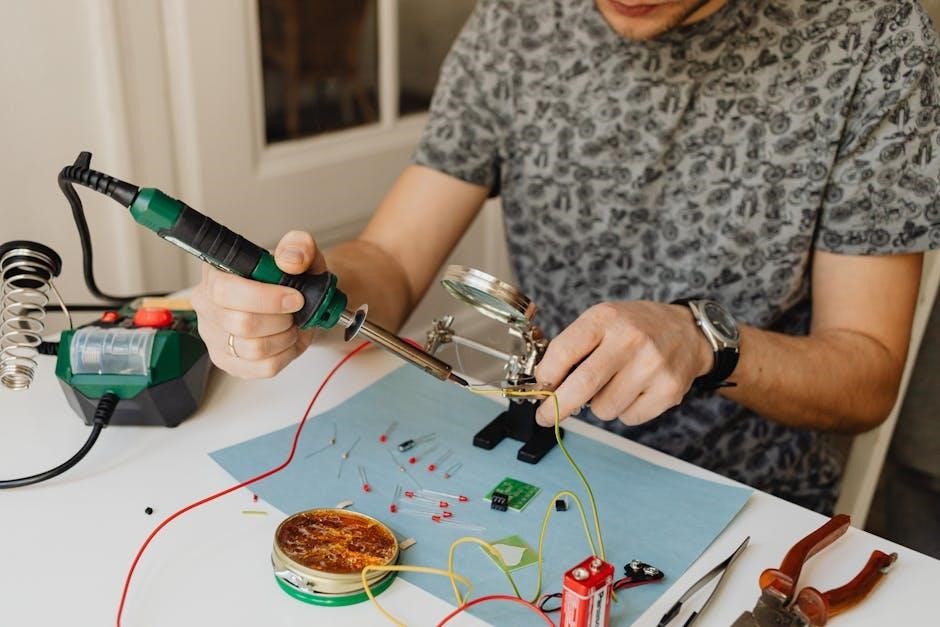
3.2 How Clutch Issues Affect Gear Shifting
Clutch issues can significantly disrupt gear shifting by causing the engine to lose connection with the transmission, leading to difficulty engaging gears smoothly. A slipping or worn clutch may result in grinding noises, jerky transitions, or even complete loss of gear control. This can make acceleration inconsistent and driving unpredictable, potentially causing the vehicle to stall or hesitate during acceleration. Addressing clutch problems promptly is essential to maintain smooth and reliable gear shifting.
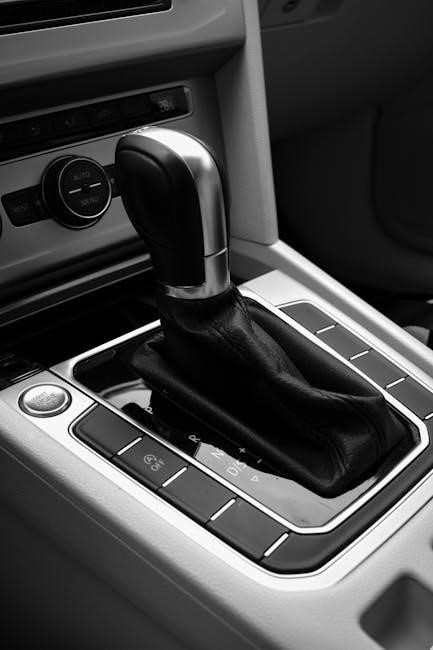
Gear Shifting Problems and Synchronizer Issues
Gear shifting issues often stem from worn or damaged synchronizers, leading to grinding noises, hard shifting, or sticking gears. These problems can make shifting difficult and noisy.
4.1 Grinding Noise During Shifting
A grinding noise during shifting is often caused by worn or damaged synchronizers. These components help match gear speeds, and when they fail, gears clash, producing a grinding sound. This issue can also result from improper clutch engagement or insufficient transmission fluid. If left unaddressed, it can lead to further damage, requiring costly repairs. Regular maintenance is essential to prevent such problems.
Hard shifting or sticking gears in a manual transmission often result from worn or damaged components like gear teeth or synchronizers. This can make shifting difficult, causing gears to hesitate or stick in place. Improper linkage adjustment or insufficient lubrication may also contribute to this issue. If left unchecked, it can lead to premature wear of internal parts, requiring extensive and costly repairs. Regular maintenance is crucial to avoid such problems.
Overheating of the Manual Transmission
4.2 Hard Shifting or Sticking Gears
Hard shifting or sticking gears in a manual transmission often result from worn or damaged components like gear teeth or synchronizers. This can make shifting difficult, causing gears to hesitate or stick in place. Improper linkage adjustment or insufficient lubrication may also contribute to this issue. If left unchecked, it can lead to premature wear of internal parts, requiring extensive and costly repairs. Regular maintenance is crucial to avoid such problems.
5.1 Causes of Excessive Heat Generation
Excessive heat in a manual transmission often stems from insufficient lubrication, faulty cooling systems, or high-mileage wear. Prolonged driving in heavy traffic or towing can also generate excessive heat. Additionally, damaged gear components or clutch issues may contribute to increased temperature, potentially leading to premature wear or failure of critical parts. Regular fluid checks and proper maintenance are essential to prevent overheating and ensure smooth operation.
5.2 Effects of Overheating on Gearbox Components
Overheating can severely damage manual transmission components, causing gear wear, bearing failure, and seals to degrade. Prolonged exposure to high temperatures accelerates lubricant degradation, reducing its protective properties. This leads to increased friction between moving parts, potentially resulting in premature wear and catastrophic failure. If left unchecked, overheating can necessitate costly repairs or even a complete gearbox overhaul to restore functionality and reliability.
Transmission Fluid Issues
Transmission fluid is crucial for lubricating gearbox components and preventing wear. Low or contaminated fluid can lead to overheating, grinding noises, and gear shifting difficulties, requiring immediate attention to avoid component failure and costly repairs.
6.1 Importance of Proper Lubrication
Proper lubrication is essential for manual transmission functionality. Transmission fluid prevents overheating, reduces friction between moving parts, and ensures smooth gear engagement. Inadequate lubrication can lead to premature wear, grinding noises, and potential gearbox failure, emphasizing the need for regular fluid checks and replacements to maintain optimal performance and longevity of the transmission system.
6.2 Consequences of Low or Dirty Fluid
Low or dirty transmission fluid can cause severe damage to the gearbox. Insufficient fluid leads to increased friction, overheating, and wear on components like gears and bearings. Dirty fluid can clog filters and damage synchronizers, resulting in erratic shifting and potential system failure. Regular fluid replacement is crucial to prevent these issues and ensure smooth, reliable transmission performance over time.
Troubleshooting a Manual Transmission That Won’t Engage
If a manual transmission won’t engage, it could stem from issues like a faulty clutch, damaged linkage, or low fluid levels. Quick diagnosis is essential to prevent further damage and ensure proper function. Always check basic controls first, such as the clutch pedal and gear alignment, before exploring more complex mechanical problems. Professional inspection may be required for unresolved issues.
7.1 Possible Causes of the Issue
A manual transmission that won’t engage may be due to a failing clutch, low or dirty transmission fluid, or damaged linkage. Internal components like worn synchronizers or gears can also prevent proper engagement. Additionally, issues with the shift fork, bearings, or pilot bearing might be at fault. Identifying these problems early can help prevent further damage and ensure smooth operation.
7.2 Steps to Diagnose and Prevent Further Damage
Start by inspecting the clutch and linkage for wear or damage. Check transmission fluid levels and condition, as low or dirty fluid can impair function. Ensure the shift linkage is properly aligned and adjusted. If issues persist, a professional mechanic should inspect internal components like synchronizers and gears to identify and address problems before they escalate, preventing costly repairs and ensuring smooth operation.
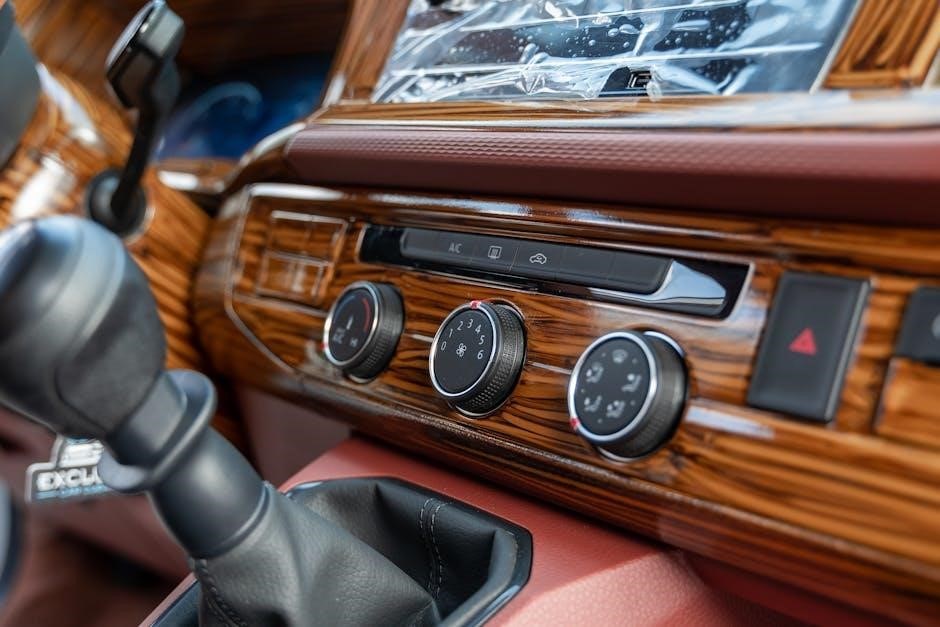
Maintenance Tips to Prevent Gearbox Problems
Regular maintenance is essential to prevent gearbox problems. Check transmission fluid levels and condition, inspect the clutch, and ensure proper linkage adjustment. Consult a mechanic for servicing.

8.1 Regular Inspection of Clutch and Linkage
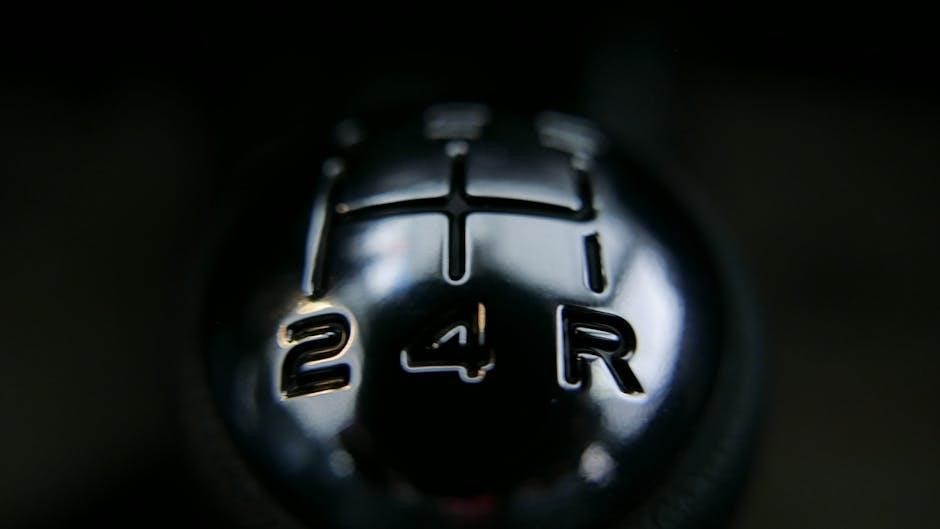
Regularly inspecting the clutch and linkage is crucial for maintaining smooth gear shifts. Check for wear on the clutch disc, pressure plate, and release bearing. Ensure the linkage is free from rust and properly lubricated. Addressing these issues early prevents major repairs and ensures optimal transmission performance over time. This simple maintenance step can extend the lifespan of your gearbox.
8.2 Importance of Fluid Checks and Replacements
Regular fluid checks and replacements are vital for maintaining manual transmission health. Transmission fluid lubricates gears and synchronizers, preventing overheating and wear. Low or dirty fluid can lead to grinding noises and hard shifting. Replacing fluid as per manufacturer guidelines ensures smooth operation and extends gearbox lifespan. Neglecting fluid maintenance can result in costly repairs down the line, emphasizing its importance in routine care.
Addressing manual transmission issues early and maintaining proper care can significantly extend gearbox lifespan. Regular checks and timely repairs ensure smooth operation and prevent major failures.
9.1 Summary of Key Problems and Solutions
Manual transmissions often face issues like oil leakage, clutch failure, and gear shifting difficulties. Regular inspections, fluid checks, and timely repairs are essential for maintaining performance. Addressing problems early prevents costly overhauls, ensuring longevity and reliability. Proper lubrication and clutch maintenance are critical, while professional assistance is recommended for severe or complex issues to avoid further damage.
9.2 The Importance of Professional Repair for Severe Issues
Severe manual transmission problems often require professional expertise due to the complexity of modern gearboxes. DIY repairs can lead to further damage or unsafe conditions. Mechanics possess the tools and knowledge to diagnose and fix internal components like synchronizers or gears effectively. Professional intervention ensures proper repairs, preventing prolonged downtime and maintaining vehicle reliability and safety.
